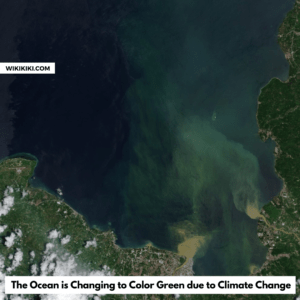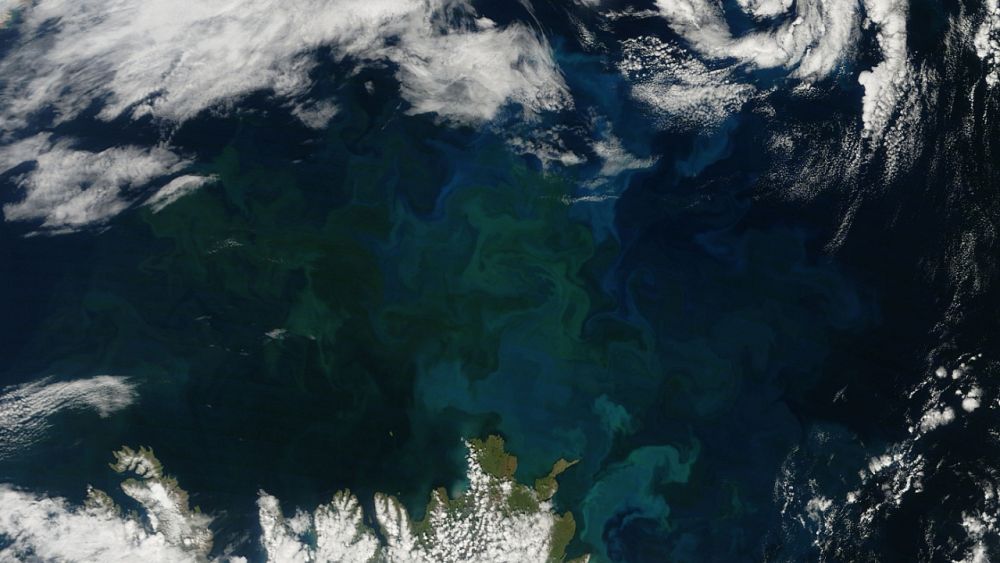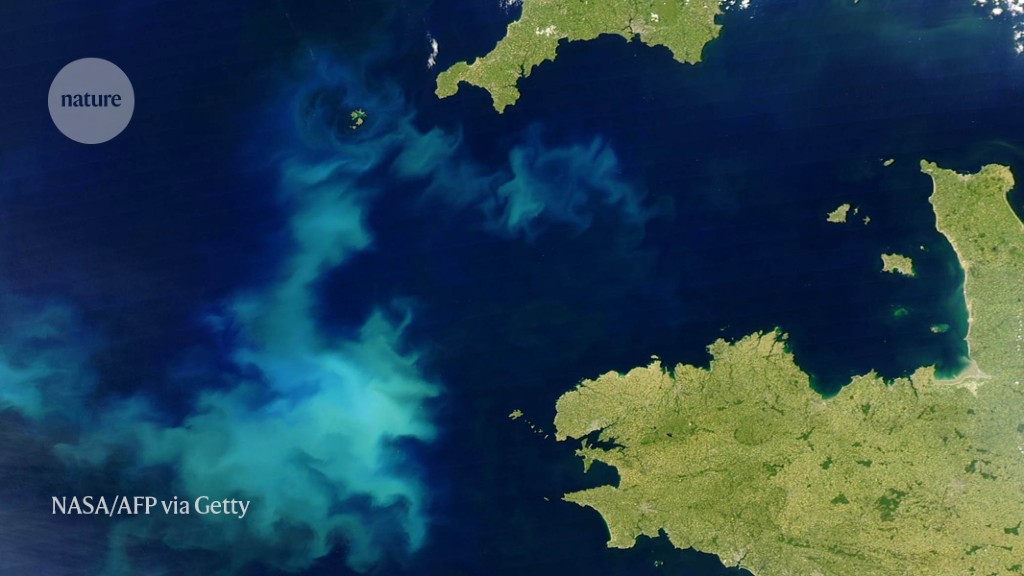The world’s Oceans, once eminent for their deep blue shades, are going through a change in color because of the impacts of Climate change. Ongoing research has revealed that the greater part of the planet’s oceans have become greener throughout the course of two decades.
This change of color isn’t only a aesthetic alteration; it serves as a reflection of the profound ecological shifts occurring beneath the ocean’s surface.. The greening of the oceans is firmly connected to changes in plankton populations, which assume an imperative part in marine ecosystem.

Also Read: Iceland Volcanic Eruption Close to the Capital City Reykjavik
Sources Related to Change in Ocean Color (For R&D)
- Ocean Colour – ESA Climate Change Initiative
- Climate Change is Affecting the Color of the Ocean
- Global warming will cause the world’s oceans to change color. Here’s why.
- By 2100, the Ocean will Be a Different Color
- Ocean Color—A Key to Climate Change
- Oceans will change color by the end of the century, scientists warn
The color of the seas gives significant insights of knowledge into the condition of marine environments. The predominant component affecting sea tone is the presence of phytoplankton, microscopic organisms that carry out photosynthesis and contain the green pigment chlorophyll.
Phytoplankton form the foundation of the marine food web and play an essential part in carbon cycling and oxygen production. By concentrating on changes in sea color, researchers can acquire a more deeper understanding of varieties in phytoplankton populations and assess the health of marine ecosystems.
The Greening of the Oceans
Recent research conducted by researchers at the National Oceanography Centre in Southampton and other institutions has revealed insight into the changing color of the world’s seas. By breaking down information from NASA’s Modis-Aqua satellite, which has been checking sea tone for 20 years, specialists recognized huge changes in color across 56% of the sea surface.
The most prominent changes were seen in tropical and subtropical areas, fundamentally between the latitudes of 40º S and 40º N.
The reasons for the Ocean’s color changes are still being researched, however researchers accept that Climate change and its related effects are the driving factors. One theory suggests that the alterations in coloration are related to changes in nutrient distribution within the oceans.
Also Read: Philippines’s Mount Mayon Volcano Spews Lava, Thousands Evacuate
As surface waters warm, they become more stratified, hindering the upward movement of nutrients. This change in nutrients accessibility might lean toward the endurance of more smaller phytoplankton over bigger ones, prompting changes in the general structure of marine environments and thus modifying the color of the water.
The greening of the seas has critical ramifications for marine ecosystem and the global climate system. Changes in phytoplankton populations can upset the delicate balance of food chains, affecting the abundance and distribution of other marine organisms.
Also Read: Japan Floods: Heavy Rains Causes Floods and Landslides, 1 Dead
Besides, phytoplankton plays an important part in carbon dioxide, impacting the sea’s ability to retain and store carbon dioxide. Changed phytoplankton communities might have far-reaching consequences for carbon cycling, potentially impacting climate regulation and the Earth’s overall carbon budget.
To additionally examine the ecological ramifications of sea color transforms, ongoing research and advanced technologies are essential. NASA’s upcoming Plankton, Aerosol, Cloud, ocean Ecosystem (PACE) satellite mission, set to launch in 2024, will provide unprecedented hyperspectral measurements of ocean color.
This upgraded capacity will empower researchers to acquire a more exhaustive comprehension of the natural and biogeochemical outcomes of the noticed trends. The data collected by PACE will contribute to improved models and predictions, facilitating informed decision-making for the conservation and management of oceanic resources.
Also Read: New Delhi Floods: Deadly Monsoon Rains, leaving 15 Dead
























+ There are no comments
Add yours